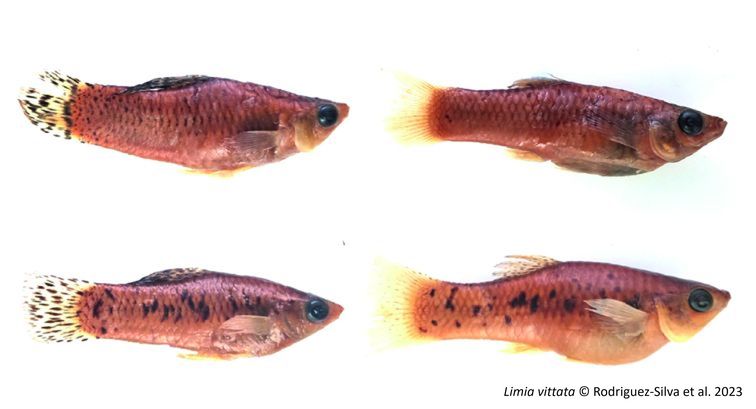In Cuba, the species Limia vittata is widespread. This fish that is endemic of the island presents a color polymorphism: some individuals have black spots on their body, while others do not. To understand the origin of this variability in appearance, researchers have tested two hypotheses: natural selection and sexual selection.
Limia vittata is a species of fish belonging to the Poeciliidae family. Endemic to Cuba, these fish are found in a wide variety of environments across the island, ranging from freshwater to saltwater. These characteristics could both explain the variability observed in the appearance of individuals: both males and females present a variable number of black spots, sometimes even completely absent.
First, closely related species like guppies are also known to present a color polymorphism. In some of these species, males exhibiting rare color patterns have a reproductive advantage. In other words, sexual selection, through the preference of females, could explain the presence of color variations within their populations. However, the varied environments in which L. vittate fish can live could also explain their diversity. It is indeed possible that certain environments could favor particular patterns due to natural selection. To better understand which mechanism is at the origin of the polymorphism observed in L. vittata, researchers investigated the two hypotheses.
The influence of sexual selection was tested in the lab by a very classic test in the field: a dichotomous choice test. Each focal individual was placed in the center of an aquarium. A high-spotted and a low-spotted fish of the opposite sex were placed on either side of the aquarium. The time spent near each of the two fish is considered a good indicator of individual preferences.

Fish were sampled in varied environments in Cuba
To understand the role of natural selection, the researchers used one of the most variable parameters: water salinity. After estimating the quantity of black spots in fish captured for a previous study, they checked the link with the levels of water salinity measured at the sites where the fish were captured.
Results? Researchers did not find any preference of males or females for low-spotted or high-spotted partners. On the other hand, the frequency of spotted individuals was significantly higher in saltwater environments compared with freshwater habitats. According to the researchers, salty environments correspond to coastal environments or estuaries that could host a greater number of predators. In these environments that are rich in organic matter, the black spots would be a camouflage. Individuals with spots would thus more easily escape predation. Studies carried out in other species of fish have indeed shown that predators prefer unspotted morphs. Next step: verify this hypothesis in L. vittata in a future study!
Reference
Rodriguez-Silva, R., Spikes, M., Monsisbay, M.I. & Schlupp, I. (2023). Color polymorphism in the Cuban endemic livebearing fish Limia vittata (Teloestei, Poeciliidae): Potential roles of sexual and natural selection. Ecology & Evolution 13: e9768.

